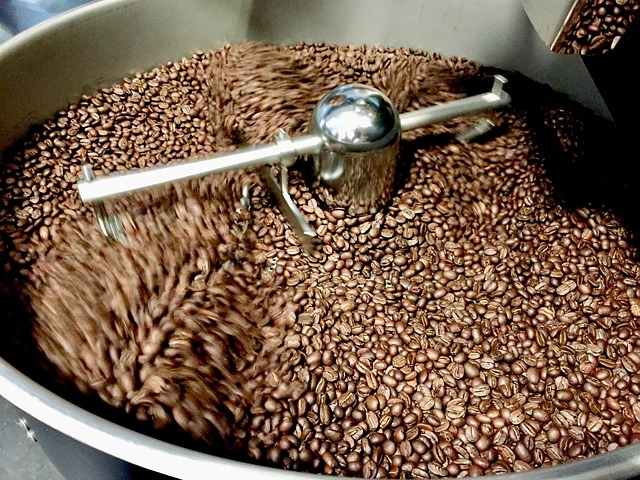Phase #1: The Initial Drying
Did you realize that specialty green coffee comes with about 10-12% moisture still retained in the beans upon import? This moisture level is crucial for maintaining quality. However, before roasting, the beans need a final drying phase.
The initial drying phase kicks off when the coffee is loaded into the drum at the onset of the roasting process. Inside the drum, the coffee absorbs heat, causing the remaining moisture to transform into steam. Consequently, both mass and density decrease. Depending on your roasting method, style, or equipment, this drying phase typically lasts between 4–7 minutes. It’s essential to carefully monitor this phase’s duration. Rushing through it might lead to uneven heat distribution and external burning, while extending it could result in underdeveloped roasting.
The heat applied during the drying phase sets the foundation for the entire roast and influences the subsequent phases. Once the coffee shifts from green to yellow, marking the color change, it signals the transition to the next phase of coffee roasting: caramelization.
Phase #2: The Caramelization
The caramelization phase occurs between the yellowing and the first crack. Here, sugars within the bean undergo breakdown, or caramelization, due to exposure to high temperatures inside the drum. Precisely controlling the length and rate of this phase is vital for effective roasting. This stage presents an opportunity to maximize flavor development from the ongoing chemical reactions.
Central to the caramelization phase is the Maillard reaction, a non-enzymatic browning process resulting from the interaction of simple sugars and amino acids. This reaction generates a spectrum of new flavors and aromatic compounds, crucially impacting the roast depending on the applied heat and duration.
Phase #3: The Development
Once the first crack occurs, you’ve entered the final phase of the roasting process: development. First crack is the release of built-up energy, steam, and carbon dioxide—an exothermic reaction resulting from water inside the beans turning into steam and building up pressure, causing the beans to crack open.
Development is critical as it allows the roaster to control and shape the coffee’s flavor profile. During this phase, the roaster observes the coffee as it undergoes various chemical reactions that transform its flavor. Sugars and acids begin to caramelize, contributing to the emergence of complex flavors and aromas. By meticulously managing factors like temperature, airflow, and duration during this phase, the roaster can accentuate specific flavor characteristics and achieve the desired balance in the final cup.
In Conclusion
The phases of coffee roasting form the cornerstone of consistency and quality in every batch of roasted coffee. As you delve into the world of coffee roasting, keep the nuances of the drying, caramelization, and development phases in mind. Happy roasting!



Add comment